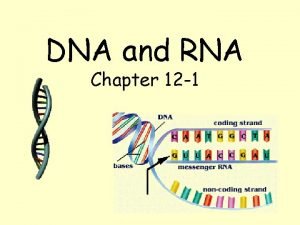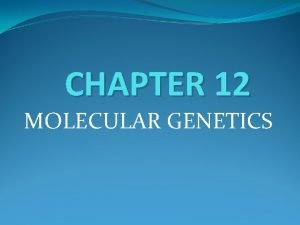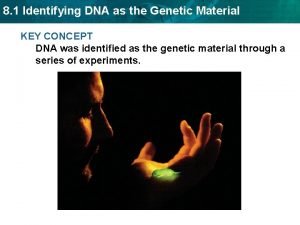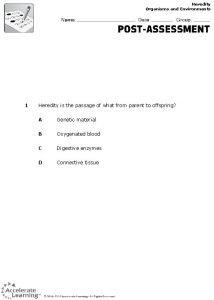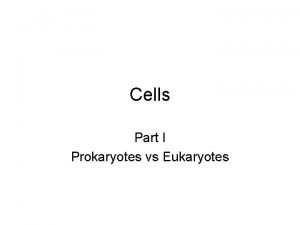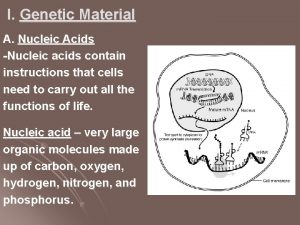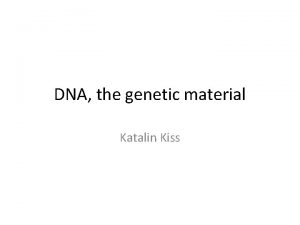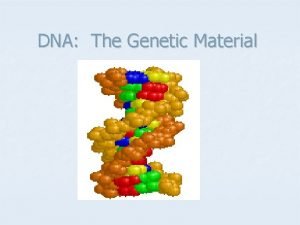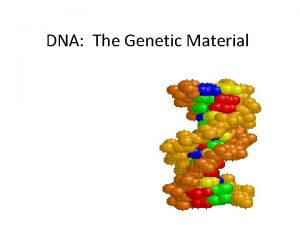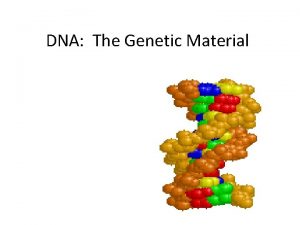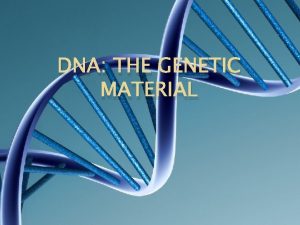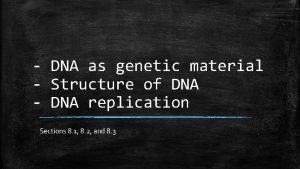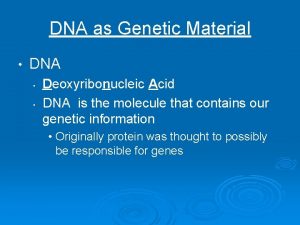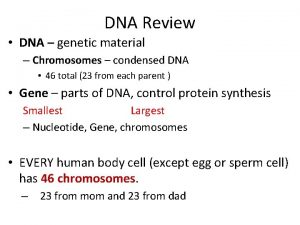DNA the genetic material Katalin Kiss http www














- Slides: 14

DNA, the genetic material Katalin Kiss

http: //www. ralf-dahm. com/index. php? id=61 • Friedrich Miescher 1868. : DNA („nuclein”) in the nucleus of white blood cells – The role of DNA was unknown – Theory: proteins code for genetic information • First half of 1900’: Experiments proving the „genetic role” of DNA – Griffith 1928. and Avery and his colleauges 1944. : „bacterium transformation”experiments – Hershey-Chase 1952. : „bacteriophage infection experiment”

Bacterium transformation experiments http: //biologytb. net 23. net/text/chapter 11/concept 11. 1. html v Frederick Griffith: • Introduction of term „transformation” • Scientific messages: • The transforming material is heat resistant • Proteins do not code for the genetic information v Oswald Avery, Colin Mac. Leod, and Maclyn Mc. Carty: • DNA causes transformation • DNA is the genetic material

Bacteriophage experiment http: //biologytb. net 23. net/text/chapter 11/concept 11. 1. html Alfred Day Hershey és Martha Chase: DNA is responsible for the viral infection and the reprograming of host cells

Replication Katalin Kiss

• replication= DNA synthesis = making 2 identical copies of DNA • 2 double stranded DNA molecules are made from 1 double stranded DNA molecule • point of time in life of cell: before cell division (in eukaryotes in S phase) • significance: to make 2 identical copies of each DNA molecule for the daughter cells • basis of inheritance of genetic information from parents to offsprings


Structure of DNA • Monomers: nucleotides (2’ deoxyribonucleosidemonophosphates in the chain and deoxyribonucleoside-triphosphate at 5’ end) • 3’-5’ phosphodiester bonds • 5’ and 3’ ends • Double stranded • Antiparallel orientation • Complementary base pairing (A-T, G-C); H-bonds

Process of replication – Initiation: • ori is recognized by proteins • 2 strands are separated by cleaving the H bonds • primer binding – Elongation: in replication bubble • complementary nucleotide binds to template strand with H bonds • DNA polymerase forms 3’-5’ phosphodiester bond – Termination • separation of 2 ds. DNA molecules from each other

Replication bubble ori Replication fork http: //www. sciencephoto. com/media/132241/view

Replication fork

motifolio. com

General features of replication • Multienzyme complex= replisome does replication • starts at Origin =ori site – in prokaryotes: 1; in eukaryotes: several/ 1 DNA • Bidirectional (in 2 directions from ori) • Semiconservative (1 parental and 1 daughter strand in new DNA) • Semidiscontinuous (2 types of new strands: continuously made leading strand; discontinuously made lagging strand) • DNA polymerase: forms 3’-5’phosphodiester bonds – – Substrates: deoxyribonucleoside-triphosphates Template dependent Primer dependent Energy-dependent (high energy bonds in nucleotides serve energy) • Direction: – Synthesis of the new strand: from 5’ to 3’ end – DNA polymerase movement on template: from 3’ to 5’ end

PNAS Vol. 104, pp. 1500 -1505, 2007 PNAS Vol. 71, No. 1, pp. 135 -139, January 1974
 Chapter 12 section 1 dna the genetic material
Chapter 12 section 1 dna the genetic material Chapter 12 section 1: dna: the genetic material
Chapter 12 section 1: dna: the genetic material Chapter 12 section 1 dna the genetic material
Chapter 12 section 1 dna the genetic material Chapter 12 dna and rna section 12-1
Chapter 12 dna and rna section 12-1 Chapter 12 section 1 dna the genetic material
Chapter 12 section 1 dna the genetic material Section 1 identifying dna as the genetic material
Section 1 identifying dna as the genetic material Genetic drift vs gene flow
Genetic drift vs gene flow Genetic programming vs genetic algorithm
Genetic programming vs genetic algorithm Genetic programming vs genetic algorithm
Genetic programming vs genetic algorithm Gene flow vs genetic drift
Gene flow vs genetic drift What is the difference between genetic drift and gene flow
What is the difference between genetic drift and gene flow Heredity is best described as
Heredity is best described as Chapter 3 cells and tissues
Chapter 3 cells and tissues Which part of the cell contains genetic material
Which part of the cell contains genetic material Genetic material
Genetic material



